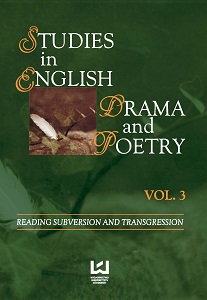Quantum Mechanics and the Relativity of Human Identity: Tom Stoppard’s Hapgood
Quantum Mechanics and the Relativity of Human Identity: Tom Stoppard’s Hapgood
Author(s): Jadwiga Uchman
Subject(s): British Literature
Published by: Wydawnictwo Uniwersytetu Łódzkiego
Keywords: quantum mechanics;relativity of human identity;Tom Stoppard;Hapgood
Summary/Abstract: Tom Stoppard’s Hapgood has often been discussed as a spy drama employing intertextual references to physics (quantum mechanics, uncertainty principle) and mathematics (Euler’s geometry) to detect a traitor in the English secret-service network. On several occasions, however, Stoppard has argued that the play is specifically about a woman, Hapgood, whose identity is not easy to define. On the one hand, she is the leader of a group of agents. On the other, she is the mother of little Joe, whose father is Joseph Kerner, a member of the network and an atomic physicist whose explanations of physics and mathematics illuminate the meaning of the events of the play. Apart from the two elements inherent in the identity of Hapgood, that is, the “technical” and the “personal,” she also appears in the double role of herself and her twin sister, Celia, this being an attempt, and a successful one, to confirm the suspicions that the traitor in their midst is Ridley, who not only is a double agent working both for the English and the Russians but also has a real twin brother.
Book: Studies in English Drama and Poetry vol. 3. Reading subversion and transgression
- Page Range: 93-104
- Page Count: 12
- Publication Year: 2013
- Language: English
- Content File-PDF

